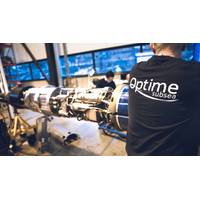
Optime Subsea Tests Wireless Comms System for Well Completion Operations
, in 370 meters water depth," the company said.“This is a game-changer for the oil and gas industry, which for 20 years has tried to solve this challenge. For the very first time, the complete wireless installation of the tubing hanger on the subsea tree was accomplished without relying on a wired drill pipe,” says Trond Løkka, chief innovation officer at Norway-based Optime Subsea.Wi-fi below water"When completing subsea wells, the tubing hanger is placed on top of the wellhead, as a seal towards the rest of the subsea well. Normally the tubing hanger is controlled through
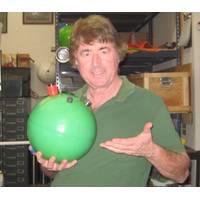
Lander Lab #5: Lithium Polymer Batteries
.A LiPo configuration is specified by the number of prismatic cells, and how they are connected, that is the numbers of cells in series and in parallel. A “6S1P” means there are 6 cells in series, and only 1 stack, with none in parallel. Virtually all prismatic batteries are wired with all cells in series, and so the configuration is simply referred to as “6S”, with the “1P” understood.About voltages: The nominal voltage of a battery is the number of cells x 3.7v/cell, the mid-point voltage of a battery pack. A 6S battery is described as 6 cells
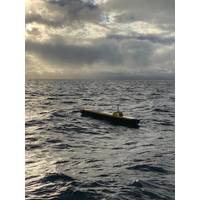
AutoNaut Completes a 16-week, 4,000-mile Mission on the Atlantic continental shelf break
CTD data is good, and analysis will show whether this is a worthwhile way to collect surface data relevant to ocean currents and climate changes in future.Remote Operators (pilots, who can be based anywhere in the world with an internet connection) must be given a clear brief on how a particular boat is wired up. In this case the GNSS was wired in with the CTD rather than the ADCP, for which the GNSS data is required. Normally this would not matter, but when the CTD was cycled to save power that section of ADCP data was degraded too.‘External stakeholders’ were wonderfully helpful
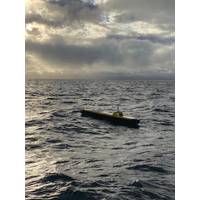
Case Study: Autonaut Put to the Test
CTD data is good, and analysis will show whether this is a worthwhile way to collect surface data relevant to ocean currents and climate changes in future.Remote Operators (pilots, who can be based anywhere in the world with an internet connection) must be given a clear brief on how a particular boat is wired up. In this case the GNSS was wired in with the CTD rather than the ADCP, for which the GNSS data is required. Normally this would not matter, but when the CTD was cycled to save power that section of ADCP data was degraded too.‘External stakeholders’ were wonderfully helpful
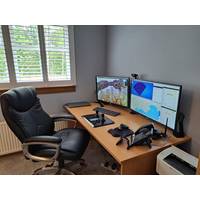
ROV Pilots to Work from Home?
to multiple locations anywhere.256bit AES encrypted VPN communications.Complete connectivity monitoring, latency, packet loss, packet order.Options for packet error correction and additional packet redundancy for smooth video delivery.Ability to bond and manage multiple WAN connections, 4G/5G, VSAT, Wired, Fiber and LEO devices to ensure unbreakable connectivity anywhere.With this an ROV could be deployed anywhere in the world: a pilot working from home in Scotland twinned with an inspection engineer in Egypt, all being coordinated from an office in Norway.What happens if the connection breaks or
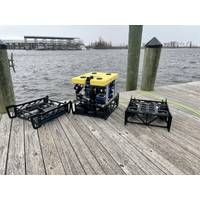
Outland Sells ROV With Multiple Tritech Sensors Emas Energy Services
Mayfield of Outland Technology. "They needed a small, robust ROV that was capable of deploying various sensors and to be able to change them quickly and easily. The Outland ROV-2500, along with the variety of quality products offered by Tritech, allowed us to develop skid packages that are pre-wired and pre-ballasted to quickly attach to the underside of the ROV-2500. Data from the sensors are easily communicated to the surface through Outland Technology’s standard communication network and interpreted by Tritech software packages."Photo courtesy Outland Technolog
Semtech, Wilhelmsen, TTI Team-up for Maritime IoT
this new IoT platform will be utilized to deliver, among other things, digital condition monitoring, asset tracking and logistical applications. This goes hand in hand with the group’s onboard app store project, ShipOS, headed by RaaLabs.”Traditionally, sensor data on ships is carried through wired systems, or managed via periodic manual readings. However, LoRa-based wireless sensors can monitor many variables, including condition of machinery, fuel efficiency, environmental metrics, and cargo, and this data is used to conduct preventive maintenance.An established tool in the onshore manufacturing

Priestley Joins WFS Technologies
;s Digital Oilfield event in Aberdeen, and the International IoT and Digital Transformation for Oil & Gas conference to be held in Amsterdam in June.Widely recognized as a thought leader and evangelist on emerging technologies, Preistly has written more than 100 articles for publications including WIRED, Forbes, Venturebeat, Huffington Post, The European, as well as provided commentary for BBC Radio and UK national television.Priestley has been a former vice president at global software companies, SAP and Software AG, and a mentor for startup accelerators including HTC Vive X.His appointment is
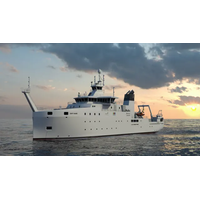
Kongsberg to Equip Belgian Research Vessel
, the ME70 multibeam system and the unique omnidirectional sonar SU90 that can detect and track life forms for several kilometers around the vessel, will form the foundation of the new craft’s scientific scope. The vessel will also be equipped with the Simrad wireless PX trawl monitoring system and wired FX80 catch monitoring system, which can provide a live camera feed enabling monitoring of fish activity within the trawl.In addition, the delivery will include Kongsberg’s acclaimed deep- and shallow-water multibeam echo sounders for bottom mapping; the EM 304 1 x 1 degree and EM2040 Dual RX



 February 2024
February 2024





